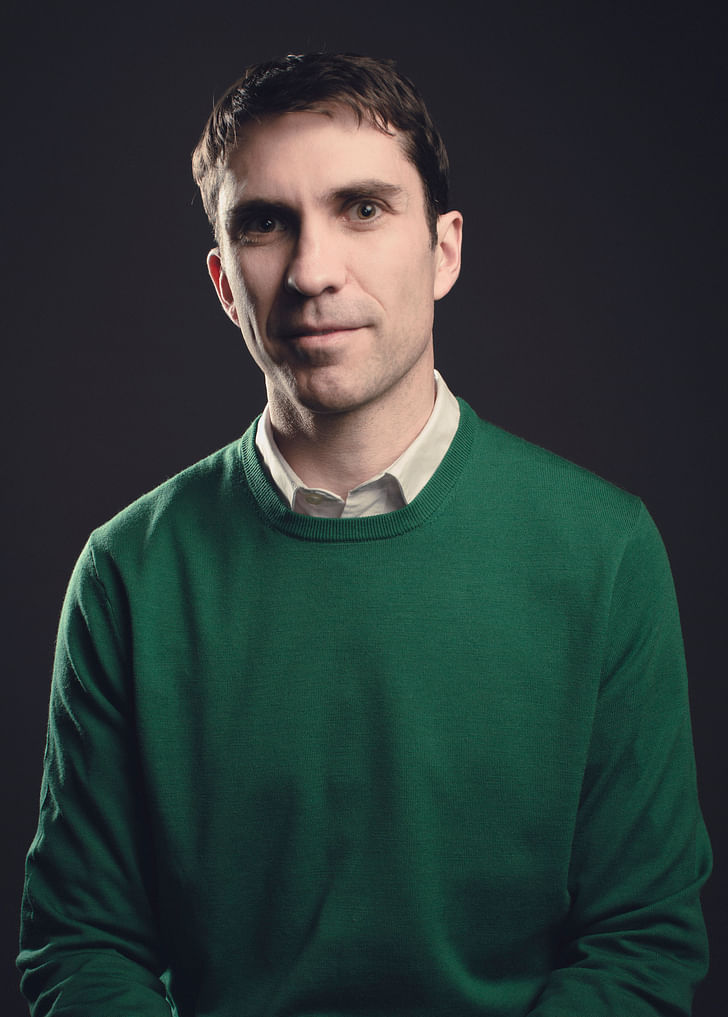

"Why not?" answers Paul Andersen when asked why he was originally motivated to start his own firm. Founder of the Denver-based Independent Architecture, this carefree attitude is what sets the architect and his studio apart, with projects that are deceptively simple on the surface, but reveal a profound sense of humor upon retrospection.
For this week's Small Studio Snapshot, we talk with Andersen about what he's working on, the importance of pop practices for the field, and not taking architecture too seriously.
How many people are in your practice?
Right now, two.
Why were you originally motivated to start your own practice?
Why not?
What hurdles have you come across?
We’ve never been able to figure out how to build a realistic bubble gum column on a budget.
Can you talk about the role of pop culture in your work?
We pull from pop culture in two ways. One is to use pop culture as a model for how we work. Pop practices accept that their work isn’t essential. It acquires value when people like it—and those people might be their friends, experts in the field, the general public, or any number of groups. This seems like a good approach for architecture, too. Relieved of the responsibility to be fundamentally good, we feel free to do strange, irrational projects. And, sometimes, to fail.
Relieved of the responsibility to be fundamentally good, we feel free to do strange, irrational projects.
The second is to borrow material. Sometimes we incorporate everyday objects, like giant party balloons, statues, and letterforms. In other cases, we use a familiar material in an unorthodox way, like we did with glazed structural tile in the Chicago Cultural Center (a project that we designed with Paul Preissner, learn more about this in our conversation with both Paul's from 2015's Chicago Architecture Biennial). And occasionally we look for new design principles in idiosyncratic examples of ordinary buildings.
How do you split your time between more typical ground-up constructions and academic, exploratory endeavors?
It’s hard to say. The boundaries are fuzzy when it comes to built and unbuilt projects, practicing and teaching, and typical and uncharacteristic work. All of the projects deal with the same issues, so the work tends to move in and out of those categories. For instance, when we were getting into curves in our plans, I ran a research studio at UIC on the fillet, or soft corner. Some of the office’s expertise migrated to the research studio and the studio’s work eventually moved back to the office.
What are some of the changes in contemporary culture that your practice is responding to?
Because people have so much to see, it’s hard to hold their attention
If you wanted to be part of the discussion a generation ago, you had to build a lot of big public buildings or get a monograph, which you could only get if you’d built a lot of big public buildings. The challenge was getting your work in front of people. Nowadays, that’s pretty easy to do. But because people have so much to see, it’s hard to hold their attention. We’re more or less halfway through a response to this shift. We only design a few projects at a time, so we can develop thoughtful, provocative speculation—we can make something that we think might be worth a long look. The second part is figuring out how to publicly present it. We’re still working on that.
What are you working on now?
We’re building a house in which repetition is a function of excess, rather than efficiency or variation. It’s made of the usual parts, but, by conventional standards, it has an unreasonably large number of those parts. For example, the roof has too many gables and the interior is all doors.
Construction is also underway on a light industrial project in Frederick, CO. It includes eight buildings that will be similar to traditional Western false front buildings, but with continuous parapets that drop below the roofline in some places, and a chunky hairpin base that wraps the windows and doors.
Is scaling up a goal or would you like to maintain the size of your practice?
I imagine that the office will grow, but we’ll never be a big practice. The bigger an office is, the more efficient, hierarchical, and consistent it has to be, and you can’t do that when you’re messing around on the fringe.
What are the benefits of having your own practice? And staying small?
One benefit is being able to pursue a wide range of interests, which is a big deal if you’re a curious person. Another is having less pressure to work economically. We have very little overhead, so we can spend time developing our projects. A client told me recently that he’s never seen an office switch schemes as willingly as we do. (He assured me that he was giving us a compliment.) If a part isn’t working as well as we’d hoped, we can usually move on to a different one.
2 Comments
My favorite professor when I studied at UIC.
Keep up the good work, Paul.
Architecture relieved itself already long ago.
Block this user
Are you sure you want to block this user and hide all related comments throughout the site?
Archinect
This is your first comment on Archinect. Your comment will be visible once approved.